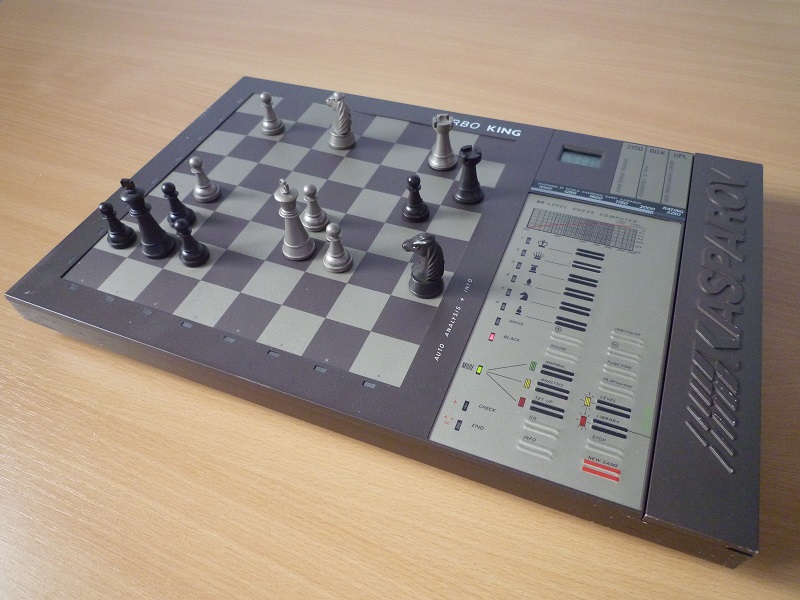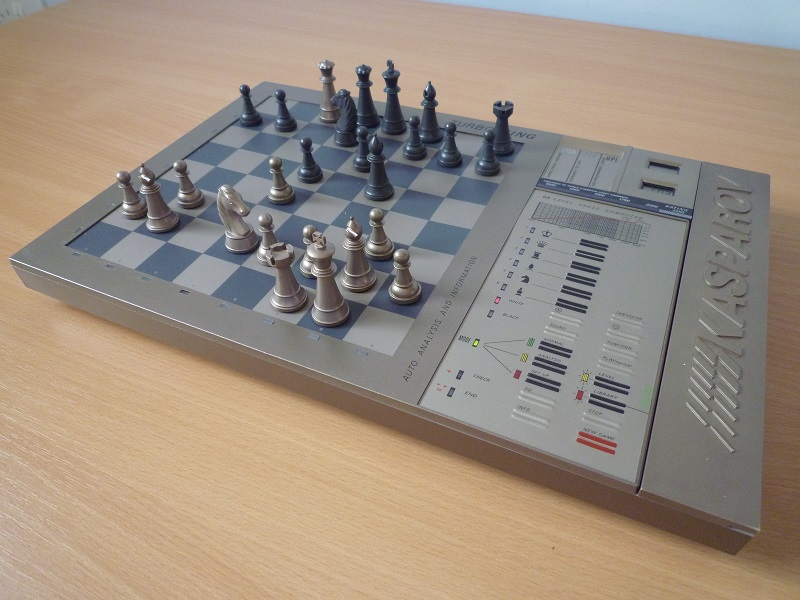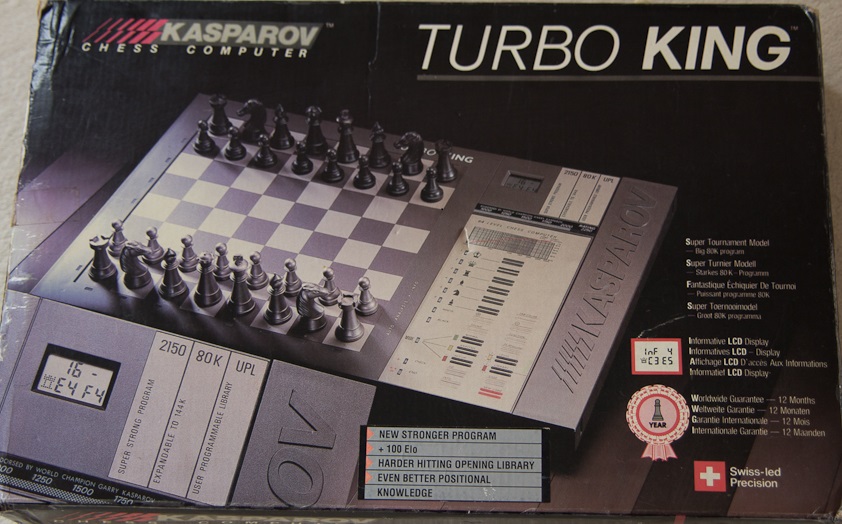|
Pictures above are of a Turbo King I. An early example with the Maestro B program released in 1987. A second stronger version with the Saitek ‘D’ program was introduced in 1990. As far as I am aware Turbo King II is identical in appearance and features to Turbo King I but the Turbo King II box has an additional panel proclaiming the new stronger program. Selective Search has the first version rated at 1804 Elo and the second version rated 1855 Elo.
In Computer Chess Reports 1987-88 Larry Kaufman had this to say about the Turbo King :-
“The most competitive Saitek model is the new Turbo King, intended to replace the old Turbostar. It contains the Maestro B program, but at 5 MHz instead of 6 and with a somewhat smaller opening book. Saitek claims a 2150 rating right on the machine, which is nonsense, but it does appear to be the only Expert level machine with a display for under $200. My testing on mating problems confirms claims of a 30% speed-up over the Turbostar 540, but my limited tests to date do not show any increase in strength, perhaps due to level-specific problems as with the Maestro B. Some of the speed gain was given back in return for more accurate evaluation, which tends to hurt the faster levels but to help at 40/2. I suspect that it may surpass the Par Excel, its main rival under $200, on the slower levels but certainly not at faster speeds. It is almost surely weaker than all models over $200 reviewed in this CCR, at all practical play levels. It seems to do a very thorough evaluation of a very small number of positions compared to other machines, which accounts for its weakness at fast speeds. This suggests that it may excel at overnight analysis, though I have not investigated this point. In sum, if you must stay under $200, don't care about fast play, and value a display and fairly strong play, Turbo King is for you. The opening book is reasonably varied and deep. A nice feature is the ability to take back moves simply by un-making them, previously offered only by Mephisto. On the minus side, it is more difficult to set the levels than on the Turbostar and almost all competing models. A more expensive 6 MHz version in a wooden board, provisionally named Stratos is expected soon. All of the above Saitek models are rather strong at tactics involving the winning of material, but are exceptionally weak at spotting mating attacks, and are vulnerable to promotion combinations. They tend to develop winning positions frequently, but often toss them away. In this respect they resemble other selective search programs, but the frequency of blundering away a good game is tar higher than with the Mephisto programs.”
The pictures below are of a Turbo King prototype. Apparently produced in 1986 as a demonstration machine (note the Serial Number sticker). It has the hardware of a Turbo 16K, some features of a Turbo S-24K, and some of the looks of a Turbo King although the final production machine has a single two line LCD display and a rearranged layout.
|


